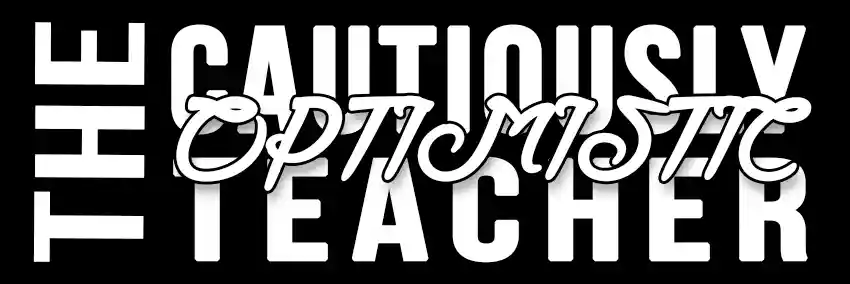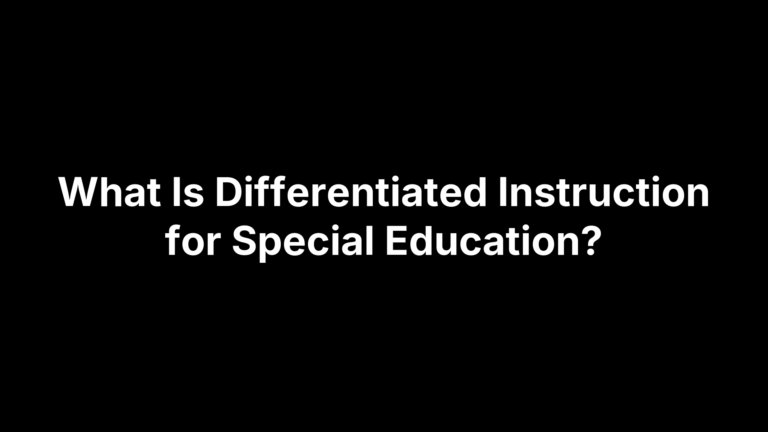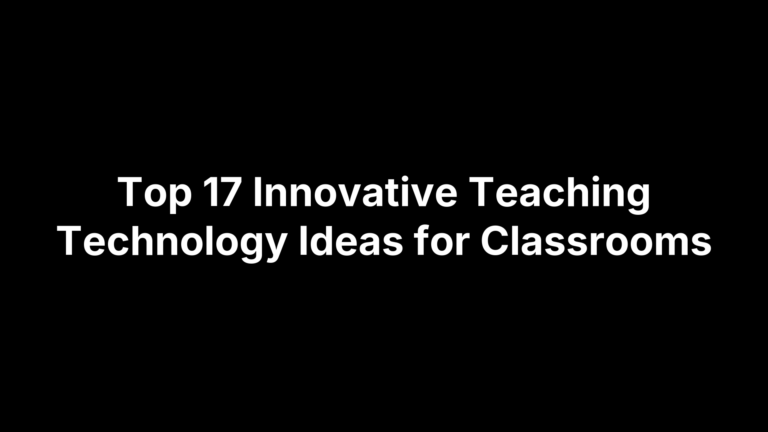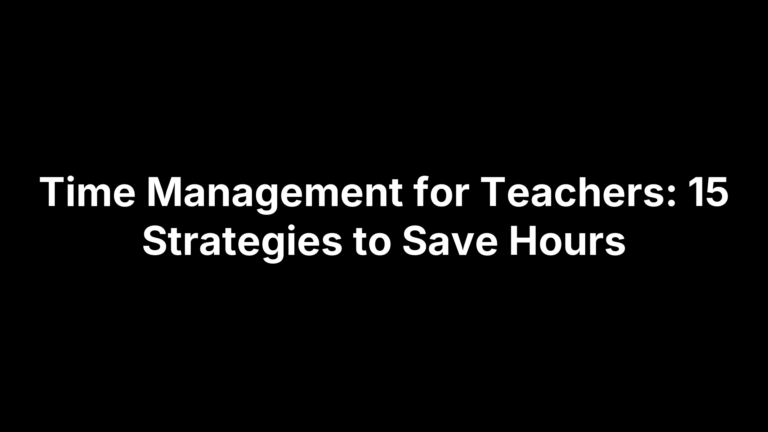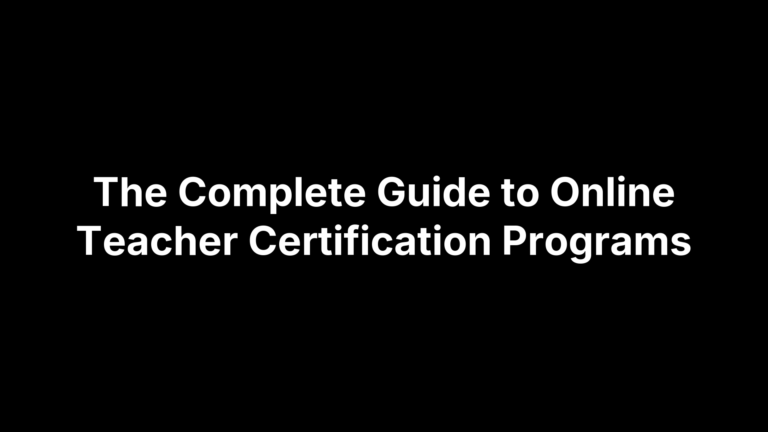20 Fun Classroom Activities for Students to Boost Engagement
Here are 20 low-prep, high-energy classroom activities you can drop into tomorrow’s schedule to get every student talking, moving, and thinking. Each idea has been road-tested by real teachers and can be trimmed to five minutes or stretched into a full block, so you’ll always have an engagement booster in your back pocket. And yes, they work with large classes and limited supplies.
Why does this matter? Because engagement isn’t a buzzword—it’s the spark when attention, enthusiasm, and collaboration collide, driving deeper learning and calmer behavior. For every activity below you’ll see prep time, step-by-step directions, differentiation options, and quick digital or analog twists, letting you choose what fits classroom reality. Examples span ELA, math, science, social studies, advisory, and mixed electives, so whether you teach decimals or dystopian novels you’ll find a match. Printable templates and slide decks are linked throughout, and the closing section points you to AI-powered tools that cut planning time further. Pick one activity to pilot this week, watch the energy shift, and keep the list handy for the next time attention starts to drift.
1. Would You Rather Warm-Up (Instant Icebreaker)
Kick off class with a fast either/or choice that gets bodies moving and brains firing. Because every student must take a stand, even the quiet kids practice speaking—and you collect instant formative data without grading a sheet.
What It Is & When to Use It
- Rapid “Would you rather…?” game that lasts 2–8 minutes
- Perfect for lesson openers, energy dips, or last-minute sub plans
- Works face-to-face (corners of the room) or online (polls/emojis) for grades 3–12
Step-by-Step Setup
- Draft 5–10 curriculum-linked prompts: “Would you rather orbit the moon or dive to the Mariana Trench?”
- Label two sides of the room (or poll options) A/B.
- Model think time → students choose side → two volunteers explain rationale.
- Repeat, inviting new voices each round.
- Wrap up with a quick “Which prompt surprised you?” reflection.
Engagement Science
Choice plus physical movement triggers a dopamine spike, while justifying answers exercises reasoning and academic vocabulary.
Differentiation & Extensions
- Provide sentence frames (“I chose ___ because…”) for ELLs.
- Let camera-shy remote learners post selfie videos.
- Turn results into a bar graph for math, or a persuasive paragraph for ELA.
2. Brainstorm Carousel (Collaborative Poster Walk)
When you need a flood of ideas — and a reason for students to leave their seats productively — the Brainstorm Carousel delivers. In 10 minutes you’ll collect more student thinking than a whole-class shout-out ever could, while reinforcing positive interdependence and movement.
Purpose & Learning Outcomes
Generates diverse ideas quickly, surfaces prior knowledge, and reinforces speaking, listening, and summarizing skills.
Materials & Setup
- 5–8 sheets of chart paper or large sticky posters placed around the room
- Bold markers or sticky notes for each group
- Timer set for 60–90 seconds per station
Procedure
- Pose an open-ended prompt.
- Assign small groups to a starting station; they jot ideas until the timer buzzes.
- On “rotate,” groups move clockwise, adding fresh points or starring favorites.
- After a full circuit, teams return to their original poster, synthesize the contributions, and present a 30-second summary.
Why Students Love It
They watch their poster “grow” with peer ideas, get to stand and move, and feel accountable for a final product.
Variations
- Digital version on Jamboard or Padlet for 1:1 devices
- Silent “graffiti” round for noise-sensitive classes
- Color-coded markers so you can track which group contributed what
3. Classroom Escape Room (Problem-Solving Adventure)
Few activities light up a room like the promise of “escaping” before the clock hits zero. A classroom escape room weaves standards-aligned puzzles into a story line, forcing teams to communicate, reason, and manage time under pressure. Set it up once and you’ll have a reusable template for review days, sub folders, or school-wide events.
Core Concept
- Students receive a mission narrative and a locked “final prize.”
- They cycle through 3–5 content-based puzzles; each correct solution reveals a code, clue, or key.
- When all parts are solved, the master lock opens and the class “escapes.”
Preparation Checklist
- Choose a theme that fits your unit (e.g., “Save the Rainforest” for biology).
- Design tiered puzzles: ciphered vocab, math riddles, primary-source analysis, etc.
- Gather materials: lock boxes or sealed envelopes, combination locks, UV pens, or a Google Form with data-validation locks.
- Print hint cards and a progress tracker; set a visible 30–45-minute timer.
Running the Activity
- Introduce the backstory and success criteria.
- Form heterogeneous teams of 4–5; hand each group their first clue.
- Circulate as “game master,” stamping checkpoints and dispensing one hint token per team.
- End with a debrief: “Which puzzle required the most collaboration?”
Engagement Drivers
Gamification + urgency = laser focus. Students naturally divide roles—leader, researcher, code-breaker—so every personality has space to shine.
Differentiation
- Offer three difficulty paths (green, blue, black) so groups self-select challenge.
- Provide symbol-supported directions for emerging readers.
- Run a fully digital escape room for remote or mobility-limited learners.
4. Kahoot! Quiz Show (Fast-Paced Review Game)
Kahoot! transforms ordinary check-for-understanding questions into a live game show bursting with color, sound effects, and real-time leaderboards. Students compete on phones, tablets, or shared laptops, so you get high energy and instant data without a stack of exit tickets.
Overview
- Free web platform for multiple-choice, true/false, puzzle, and short-answer questions
- Works synchronously or as self-paced “homework challenges”
- Ideal for bell ringers, unit reviews, or sub days across all subjects
Implementation Tips
- Copy an existing quiz or build one in minutes; mix in images or GIFs to aid comprehension.
- Turn on the nickname generator to avoid inappropriate screen names.
- Adjust time limits—longer for analysis, shorter for rapid recall.
Maximizing Engagement
- Enable “ghost mode” so classes can race previous high scores.
- Randomize point values to keep top spots fluid.
- Pause after each question to spotlight the “highest climber” and unpack common errors.
Beyond Multiple Choice
- Use the puzzle option for sequencing events or formulas.
- Collect opinions with word clouds, then launch a quick discussion.
- Assign an asynchronous challenge for absent students to stay in the game.
5. Gallery Walk (Student-Led Museum)
Turn your classroom into a mini-museum where students curate, critique, and celebrate each other’s work. The low-tech setup pushes kids out of their seats and into an authentic audience role—one of the simplest yet most fun classroom activities for students who crave movement and voice.
Purpose
A Gallery Walk spotlights student products, encourages analytical commentary, and reinforces speaking–listening standards without a whole-class presentation bottleneck.
Setup
- Tape projects, lab reports, primary-source posters, or math proofs around the room
- Place feedback slips or a QR-coded Google Form at each station
- Review respectful critique norms: “Glow” and “Grow”
Flow
- Students rotate individually or in pairs every two minutes.
- At each stop, they leave one positive note and one question.
- After the tour, creators read feedback and jot a quick reflection.
Engagement Perks
Movement boosts circulation; anonymity lowers risk; seeing peers’ interpretations sparks revision ideas and healthy competition.
Adjustments
- Silent “chalk talk” version for noise-sensitive classes
- Virtual gallery on Padlet/Wakelet for remote or 1:1 environments
- Color-coded comment cards to track who gave feedback where
6. Digital & Physical Scavenger Hunt
Few things light up students’ eyes like the phrase “first team to find it wins.” A well-designed scavenger hunt channels that energy into purposeful discovery—on campus, in the classroom, or completely online.
Concept
Students locate objects, facts, or QR codes that unlock the next task, racing against a timer or rival teams while hitting key learning targets.
Planning Steps
- Draft 8–12 clues tied to standards (e.g., “Find a polygon with more than 7 sides”).
- Embed hints in riddles, images, or short videos.
- Decide verification: photo uploads, Google Form passwords, or teacher stamp.
- Hide physical items or schedule digital drops via LMS announcements.
Running the Hunt
- Review rules and safety boundaries.
- Release the first clue and start the countdown.
- Monitor progress from a “command center,” issuing bonus hints as needed.
- Finish with a debrief on successful strategies and misconceptions.
Why It Works
Exploration + competition sparks intrinsic motivation, while the varied clue formats hit multiple modalities—visual, kinesthetic, and auditory.
Differentiation
- Color-coded clue tracks for varying difficulty.
- Allow seated students to act as “research analysts” on tablets.
- Include optional bonus missions for early finishers.
7. Snowball Discussion (Anonymous Idea Sharing)
Need a zero-prep way to surface every student’s thinking—without the fear of judgment? Grab a stack of scrap paper and let ideas “snowball” across the room.
What & Why
- Students jot a response to a prompt, crumple the paper, and toss it.
- Classmates pick up a random “snowball,” read, and discuss.
- Anonymity frees shy students and reduces status bias, giving you honest formative data.
Procedure
- Pose an open-ended question and set a 1-minute write timer.
- “Snowballs away!” Students gently toss papers toward the center.
- Each learner grabs the nearest ball, uncrumples, and silently rereads.
- In pairs or quads, students summarize the idea and add one comment or question.
- Whole class debrief: highlight patterns or misconceptions.
Engagement Factors
- Novelty of tossing paper resets attention.
- Random assignment ensures diverse viewpoints at every table.
Extensions
- Use colored paper for multiple prompts.
- Collect snowballs afterward for quick exit-ticket grading.
- Digital spin: randomize slides in Google Slides and assign each student a new one to discuss.
8. Think-Pair-Share Remix
Think-Pair-Share is a beloved standby, but the classic “turn and talk” can stall when half the class zones out during the share. The remix spices things up with timed micro-rounds, small-group “pair squares,” and digital breakout rooms that keep every voice in motion.
Classic Strategy, Fresh Twist
Instead of one partner swap, students move through two quick pairings, then merge into a quad for a consensus statement. Online, breakout rooms reshuffle every 90 seconds so nobody coasts.
Steps
- Think (1 minute) – silent jot on a sticky or Google Doc.
- Pair (1 minute) – compare with a neighbor, highlight overlaps.
- Share (3 minutes) – join another pair or whole class; spokesperson reads the combined takeaway.
Engagement Boosts
- Project a decibel meter to coach on-task volume and reset focus.
- Use a random name spinner to choose spokespeople so everyone preps to speak.
Adaptations
- Provide sentence stems (“One insight we share is…”) for ELLs or hesitant talkers.
- Allow sketch-note reflections for visual thinkers before verbal sharing.
9. Mystery Bag Inference Challenge
Nothing reels kids in faster than a sealed bag and the promise of a “big reveal.” This low-prep game sparks critical thinking and easily slots into any content block.
Overview
- Students ask yes/no questions to deduce the hidden object, term, or concept.
- Works in 10-15 minutes for grades 2–12, whole-class or small groups.
Materials
- Opaque bag or box
- 1–3 themed items (or printed clues)
- Inference chart on board or shared doc
Procedure
- Show the bag; share unit link (“It’s something from our ecology lesson”).
- Students take turns asking yes/no questions; record evidence in two columns: Clues vs. Ruled Out.
- After five questions, allow one guess per round until solved.
- Reveal item and connect to lesson objective.
Learning Outcomes
- Practices hypothesis testing, deductive reasoning, and academic vocabulary.
- Instant formative check on prior knowledge.
Variations
- Digital silhouette images for remote classes
- Use science specimens, historical artifacts, or vocabulary cards
- Speed round: limit to three questions for added tension
10. Two Truths and a Lie (Facts & Fib Activity)
A classic ice-breaker turned academic powerhouse, Two Truths and a Lie lets students blend personal flair with content knowledge while classmates play detective. Whether you’re kicking off a new unit on the American Revolution or reviewing properties of quadrilaterals, this quick game sneaks critical thinking into one of the most fun classroom activities for students.
Usage
- Works for community building on Day 1 or for mid-unit checks in any subject
- Ideal time slot: 8–12 minutes, grades 4–12, whole class or small groups
- Materials: none beyond a prompt slide or whiteboard space
How-To
- Model three statements about yourself, flagging which one is false after guesses.
- Give students 90 seconds to craft two accurate facts and one believable fib tied to the lesson (e.g., “The nucleus has DNA, ribosomes, and mitochondria”).
- Share in rounds; peers vote by holding up fingers or moving to labeled corners.
- Reveal the lie and quickly unpack why it’s incorrect.
Engagement Hooks
Social connection meets deductive reasoning—students listen closely to spot inconsistencies, cheer when they’re right, and laugh at outrageous red herrings without high-stakes pressure.
Extensions
- Design infographic posters with the trio of statements for a hallway display
- Use clickers or Google Forms to collect class data, then graph “most fooled” items
- Flip the script: one lie, two truths about a historical figure, and challenge groups to fact-check with primary sources
11. Whiteboard Relay (Rapid Response Race)
Need a lightning-quick check for understanding that pumps up the room? Whiteboard Relay is a kinetic twist on problem sets: teams line up relay-style, racing to solve and pass the board before the timer buzzes. Zero prep, maximum hustle—exactly the kind of fun classroom activities for students that also give you instant data.
Setup
- One mini whiteboard or laminated sheet per team
- Dry-erase marker and eraser at the front of each relay line
- Project or post a sequence of prompts (math facts, vocabulary, diagram labels)
Rules
- First student solves prompt #1, shows teacher for a quick thumbs-up.
- Runs board to the next teammate, who erases and tackles prompt #2.
- Continue until every student answers once.
- Fastest accurate team earns bragging rights or a small perk.
Benefits
- Built-in movement resets attention.
- Repeated retrieval boosts retention.
- Peer pressure encourages neat, legible work.
Differentiation
- Color-code questions for tiered difficulty.
- Allow a “coach” role to support learners needing extra scaffolds.
- Swap in digital whiteboards for remote or 1:1 classes.
12. Role-Play Interview Panel
Give the class a late-night–show twist: students step into character and answer unscripted questions from a “studio audience.” This quick makeover of traditional presentations pumps up engagement without extra tech or props.
Purpose
Learners embody experts—real or fictional—to practice evidence-based speaking, active listening, and perspective-taking.
Preparation
- Assign roles and a one-page research sheet.
- Provide a bank of 8–10 sample questions.
- Set up two rows of chairs: front row = panel, back row = audience.
Activity Flow
- Moderator (student or teacher) introduces panelists.
- Each panelist gives a 30-second opener “in character.”
- Audience fires questions; moderator directs traffic and enforces 60-second answers.
- Rotate roles or debrief with a quick-reflection exit slip.
Engagement
Authentic Q&A keeps students alert—no one knows which question comes next, so even audience members listen closely to avoid repeating prompts.
Variations
- Record as a podcast or video for flipped review.
- Use a “hot seat” where one volunteer fields rapid-fire questions.
- For remote classes, run the panel in breakout rooms with a shared timer.
13. Jigsaw Expert Groups (Student-Directed Teaching)
Few strategies hand the reins to students—and actually keep them steering—as effectively as the Jigsaw. By making every learner an “expert” on one slice of content, you transform passive note-takers into peer teachers. The built-in accountability (“my group can’t succeed unless I pull my weight”) turns even reluctant participants into active contributors, making it one of the most deceptively fun classroom activities for students across subjects.
Overview
Students first join temporary “expert groups” to master a subtopic, then return to their “home groups” to teach what they learned. The interdependence mirrors real-world project teams and forces concise summarizing.
Steps
- Divide the lesson into 4–6 clear subtopics.
- Form home groups; assign each member a different subtopic number.
- Students move to expert groups, study resources, and complete a graphic organizer.
- Return to home groups where each expert delivers a 2–3 minute mini-lesson.
- Finish with a quick quiz or concept map to cement learning.
Engagement Keys
- Responsibility: every voice is essential.
- Variety: switches between solo reading, small-group analysis, and teaching keep energy high.
Supports
- Provide scaffolded note templates and vocabulary banks.
- Circulate to coach experts who struggle summarizing.
- Use a short exit quiz for accountability and immediate feedback.
14. Minute-to-Win-It Challenge Station
When energy dips, fire up a Minute-to-Win-It rotation. Teams tackle 60-second mini-stations, earning points while secretly drilling essential skills.
Idea
Tie each station to today’s objective: alphabetize Greek roots on cups, sort animal cards by phylum, or solve rapid-fire linear equations.
Setup
- Set up 4–6 desk pods with clear rule cards and supplies
- Project a large
00:60countdown timer - Hand each group one running scorecard
Running the Day
Groups get 20 seconds to read directions, then the clock starts. At the buzzer they rotate clockwise. After two full circuits, tally scores and debrief the toughest task.
Why Students Thrive
A ticking clock adds positive stress, and short retrieval bursts beat long drills for memory.
Safety & Differentiation
Use soft materials, mark safe movement lanes, and provide color-coded challenge levels or bonus puzzles so every learner stays in the zone.
15. Socratic Seminar (Student-Led Dialogue)
Instead of calling on raised hands, shift the cognitive load to students with a Socratic Seminar. The class sits in two concentric circles and explores a driving question by citing evidence, challenging claims, and building on one another’s ideas—no teacher talk needed. The format works for literature analysis, current events, science ethics, even math conjectures, and builds speaking–listening standards alongside critical thinking.
Preparation
- Select a meaty, text-based prompt (e.g., “Is technology ever value-neutral?”).
- Provide 1–2 anchor texts or graphs and require annotated notes.
- Post clear discussion norms: cite the text, no hand-raising, probe politely.
- Create a simple rubric for “reference accuracy, question quality, collaboration.”
- Arrange chairs: inner circle (speakers), outer circle (observers) with clipboards.
In-Class Process
- Inner circle discusses for 8–12 minutes while outer circle tracks evidence use.
- Pause: observers give one warm/one cool feedback to a partner.
- Circles switch roles; new speakers tackle follow-up questions.
- Whole-class debrief: identify strongest evidence and lingering uncertainties.
Engagement Features
- Peer ownership keeps attention high—students don’t know when they’ll be in the hot seat.
- Real-time role swap doubles participation.
- Rubrics and self-scores gamify growth from one seminar to the next.
Scaffolds
- Provide sentence stems (“Building on __, I think…”).
- Allow backchannel notes in a shared doc for quieter voices.
- Offer color-coded “speak tokens” to balance airtime.
- Record the session for post-analysis or absent students.
16. Silent Ball (Brain Break & Focus Reset)
When the room feels buzzy and directions are starting to repeat, Silent Ball snaps students back to laser-focus without a lecture. All you need is a soft foam ball and clear expectations—making it one of the quickest, quietest, and most surprisingly fun classroom activities for students of any age.
Basics
- Students stand by their desks; talking, laughing, or a dropped catch puts you out.
- Last person standing earns a tiny perk—line leader, sticker, or simply bragging rights.
When to Use
- Transitioning between heavy cognitive tasks
- Before tests to lower anxiety
- During sub plans as a built-in management tool
Learning Benefit
Self-regulation, proprioception, and micro-break movement reset attention and reduce off-task chatter for the next lesson chunk.
Variations
- Content toss: receiver defines a vocabulary term before passing.
- “Silent Statue” mode: add a freeze pose after every catch.
- Seated version for tight classrooms—students flick a paper ball instead.
17. Emoji Storytelling (Digital Literacy Spin)
When “write a summary” elicits groans, swap text for emojis. Students translate academic content into tiny icons first, then back into formal language—a playful scaffolding move that forces precision and creative thinking. It’s quick, device-friendly, and squarely in the wheelhouse of fun classroom activities for students who live on their phones.
What It Is
- A two-phase task: emoji retelling ➜ academic translation
- Works for plot summaries, lab procedures, historical events, or math proofs
- Ideal for 1:1 devices or a projected emoji keyboard
Steps
- Model a short example (e.g., photosynthesis in five emojis).
- Students draft their own emoji sequence individually (2 min).
- Pair up to decode each other’s strings and suggest tweaks (2 min).
- Convert the final emoji story into a 2–3 sentence academic summary (3 min).
- Share standout examples on the board or LMS.
Engagement
Emojis tap pop culture and visual processing, while the translation step cements vocabulary and sequencing skills without feeling like extra work.
Extensions
- Turn sequences into comic strips with captions
- Challenge groups to include at least one “wild card” emoji logically
- Use as a formative check: misconceptions jump out when icons don’t align with concepts
18. Philosophical Chairs Debate
Sometimes students need to literally take a stand to see how—and why—their opinions shift. Philosophical Chairs is a dynamic debate protocol where learners move between “agree” and “disagree” seats as new evidence surfaces, turning abstract reasoning into visible learning.
Concept
A provocative statement (e.g., “Homework should be optional in middle school”) anchors the lesson. Students choose a side, defend it with evidence, and can physically switch chairs when persuaded by stronger arguments.
Procedure
- Post the statement and give 2 minutes of silent reflection.
- Students sit in the agree/disagree rows; undecided stay in a neutral “on-the-fence” zone.
- Set a timer for 60-second speaker turns, alternating sides.
- After each round, offer a 15-second “chair change” window.
- Close with a quick-write on what influenced any moves.
Engagement Drivers
Movement plus real-time reflection keeps adrenaline high. Because positions can change, even quiet students listen closely—they might join either camp at any moment.
Classroom Management Tips
- Use two speaking tokens per student to balance airtime.
- Require each comment to cite text, data, or personal experience.
- Appoint a student fact-checker to curb misinformation and keep debate respectful.
19. Vocabulary Pictionary Showdown
Need a lightning review? Vocabulary Pictionary turns definition drill into a competitive, kid-powered art sprint for instant engagement.
Overview
Teams pick an artist who draws the term on the whiteboard while classmates holler guesses—no letters, numbers, or pantomime allowed.
Prep
Print term cards, queue a 60-second timer, and set clear drawing zones; optional doc-cam projects sketches for big rooms and include a projected score sheet.
Gameplay
Artist draws; teammates guess. Correct answer within the minute earns a point and new drawer. If time expires, other teams may steal once.
Learning Gains
Sketching forces students to distill meaning into visuals, activating dual-coding for stronger retention and spotlighting fuzzy definitions instantly. Plus, the timed adrenaline cements recall.
Adaptations
Play on shared online whiteboards, restrict to three simple shapes for extra rigor, or swap markers for clay to aid tactile learners.
20. Build-a-Concept-Map Relay
When students sprint from desk to poster linking terms with arrows and verbs, their brains are forced to see how everything fits together. This relay fuses quick recall, higher-order synthesis, and friendly rivalry—ideal for review days or as a formative check before a quiz.
Purpose
Visualize relationships among key concepts rapidly while keeping every learner physically and cognitively active.
Materials
- Large butcher paper or shared digital canvas
- Pre-printed concept cards (one term per card)
- Glue sticks / drag-and-drop permission
- Colored markers for linking phrases
- Timer and checkpoint answer key
How It Works
- Split class into teams of 3–5; give each a stack of shuffled cards.
- On “Go,” first runner places one card and returns to tag the next teammate.
- Subsequent runners add cards and draw labeled arrows (e.g., “causes,” “is a factor of”).
- At two-minute checkpoints, teacher does a lightning accuracy scan; incorrect links get a sticky “fix” flag.
- Play continues until all cards are used or time expires; fastest accurate map wins.
Engagement
Competition plus movement spikes adrenaline, while the evolving visual makes collective thinking visible—students can literally watch knowledge networks grow.
Differentiation
- Provide hint cards or partially completed maps for support.
- Advanced groups get blank cards to add missing connections.
- Seated students serve as “quality control,” verifying links in real time.
Keep the Momentum Going
Across every activity you just scanned, four engagement levers quietly repeat: movement that re-energizes bodies, authentic choice that lets students steer, structured collaboration that amplifies voices, and a dash of gamification that turns practice into play. When those elements overlap, attention sticks, curiosity rises, and classroom management practically runs itself.
You don’t have to roll out all 20 ideas at once. Start small: choose one strategy that meshes with tomorrow’s objective—maybe a quick “Would You Rather” to preview a new concept. Test it, tweak it, stash the template in a growing “engagement toolkit,” and introduce another technique the following week. Layering slowly helps you see what clicks with your students (and fits your planning bandwidth) without overwhelming anyone.
Craving still more ready-made resources? Grab the printable templates, AI-powered worksheet generators, and weekly inspiration waiting on The Cautiously Optimistic Teacher. A single spark can light an entire school year—keep that momentum rolling.
